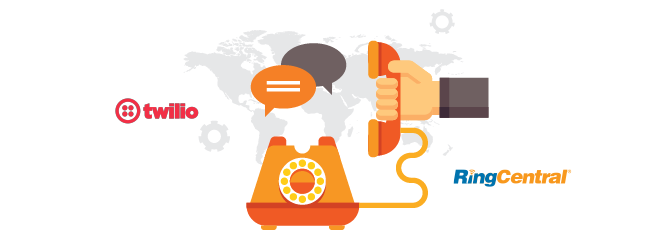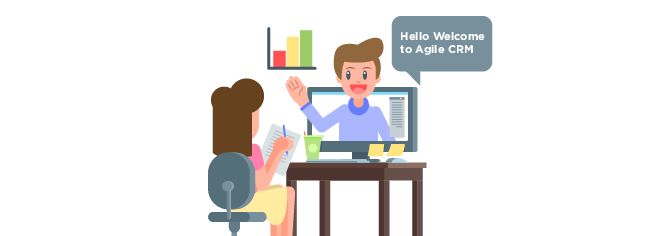13 CRM sales pipeline management practices to improve sales
A healthy sales pipeline is essential to the growth of any business. Leads flow smoothly and consistently through the pipeline when it is managed properly and supported by the right tools. When it is managed poorly leads get stuck and conversions drop.
If you haven’t defined your own sales pipeline and the stages involved, don’t worry. There are plenty of free sales pipeline templates online.
The technology available to sales teams today allows them to maintain a healthy pipeline and continually move leads through to conversion. Companies can grow at a steady rate by following sales pipeline management best practices and leveraging the right customer relationship management (CRM) software. Below we’ll cover 13 best practices for increasing sales with proper sales pipeline management.
1. Use the right technology

Using the right technology is key to increasing sales. Many growing businesses are increasingly realizing the benefits of an all-in-one CRM to drive growth and manage their pipeline. That’s because an all-in-one CRM includes sales enablement tools, marketing automation, and customer service automation all on the same platform.
A CRM stores so much data that sales reps can know exactly who their prospects are and better prepare for sales calls and meetings. It also allows reps to automate various processes that they must otherwise do manually. The best practices below revolve around using a CRM to manage your sales pipeline. But the first step is putting a CRM in place, so you can receive the associated benefits.
2. Align sales and marketing
A CRM allows you to easily align sales and marketing efforts. This helps keep the sales pipeline healthy and flowing. Marketing can run campaigns and sales can log in and see which leads are consuming which content, which web pages they have visited, and obtain additional insight into each prospect.
Misaligned sales and marketing teams can have a devastating effect on your bottom line. When you use a CRM with built-in marketing automation, those two teams form a tight synergy that allows you to better manage your pipeline and close more deals.
3. Lead scoring
All-in-one CRMs provide the ability to score leads. You can score leads on demographic information such as job title, location, industry, etc. Your system also tracks all the behavior of each lead visiting your website. You can score on anything you want, such as content downloads, visits to important web pages, and more.
Once someone reaches the score that you deem to be high enough to consider them marketing qualified (or sales-ready), they automatically get passed over to sales for outreach. In this way, sales can focus on only the most sales-ready leads and leave the rest for further nurturing. This ensures that leads are always in the correct sales pipeline stages.
4. Precise sales forecasting

CRM reporting and sales pipeline metrics allow you to maintain an accurate picture of how many deals you’ll close in the future based on how many are in the pipeline and the rate at which your reps normally convert them.
Having this view into the future helps you identify areas that are holding leads up and ensures that you have an accurate idea of future revenue.
5. Regularly assess your sales pipeline with advanced reporting
Other benefits of powerful sales reporting include the ability to regularly check in on the health of the sales pipeline. A good CRM will provide you with a dashboard where you can log in, quickly check the metrics that you need to see most and check back out a minute later.
Regularly assess the health of your sales pipeline to ensure that there are enough leads in each stage and that reps close opportunities at the rate you expect.
6. Identify bottlenecks in the pipeline
Your CRM can track where each lead is in your sales pipeline by using system tags. Your system will update their status each time a lead moves on to the next stage in your pipeline.
You can check to see how many leads are in each stage at any time of the day or night. If you see that leads are getting stopped up in one particular stage, you can investigate what to address in order to keep them flowing through each stage at the right pace.
7. Use advanced telephony

Advanced telephony features are available with some all-in-one CRMs. Telephony helps your pipeline by allowing reps to make more calls in less time. They can queue up a list of leads to call and the system dials each one in sequence so the rep doesn’t have to do that manually. This will naturally result in more leads entering the sales pipeline, which will lead to increased sales.
8. Nurture Leads
Reps can use the extensive amount of contact data in your CRM to nurture leads through the sales pipeline. They will know which content leads have consumed and which web pages they have visited.
With that knowledge, they will know which topics and products leads are interested in and can formulate their lead conversations around those interests. This logically results in more lead conversions.
9. Personalize interactions
A CRM makes it easy for reps to personalize their interactions with leads in the sales pipeline. Armed with so much insight into who each lead is, they can cater to their needs, pain points, and interests.
They can make the lead feel comfortable by discussing things that the lead is interested in. This allows them to form a rapport with leads, which does wonders for their ability to convert them into customers.
10. Use system triggers to send alerts

You can use your CRM to send an alert to a rep when a lead reaches the scoring threshold and becomes marketing qualified. Instant alerts and reminders allow the rep to reach out as soon as someone becomes marketing qualified, while they are engaged.
If reps wait too long, a competitor might engage with the lead first and win them. Alerts and reminders help the rep reach out in just the right moment, which helps bring more leads into the sales pipeline.
11. Online appointment scheduling
Online appointment scheduling allows reps to create an online calendar with a unique link. They send that link to leads and leads view open times slots and schedule meetings at the times that suit them. Then the appointment shows up on the rep’s calendar while the rep focuses on other things.
This benefits the pipeline and increases sales in two ways. First, reps can spend the time normally involved in going back and forth to schedule a meeting on speaking to other leads and closing more deals. Second, reps will get more meetings if leads can schedule their own appointments at the times that are most convenient for them.
12. Sales gamification
Sales gamification introduces an element of competition into the sales process. Reps compete against one another in various challenges such as calls made, deals closed, and revenue generated.
Competition sparks motivation and introducing gamification into your sales process results in your reps working harder to win those challenges. This leads to more calls made, more deals opened, and more leads converted into customers.
13. Maintain a clean database
Use the tools available in your CRM to maintain a clean database. Features such as duplicate lead merging help keep your data clean. Reps will lose time if they go to call a lead and the phone number is incorrect.
If other data is incorrect, they may call the lead by the wrong name or make other easy-to-avoid mistakes. That will have a negative impact on the health of your sales pipeline as reps will not be able to reach as many leads, meaning fewer will enter the pipeline, to begin with.
Conclusion
Growing your business and closing more deals is easy with the use of an all-in-one CRM. By automating processes and aligning your teams, your reps can reach more leads in less time. And the massive amounts of data there allow reps to form better relationships with leads and convert more of them into customers.
The common denominator is having the right technology in place to facilitate all of that. By putting the right CRM in place and following the tips above, you’ll maintain a healthy sales pipeline and continually increase sales.


2 Comments
Personal Finance
about 5 years agoI do not even understand how I ended up right here, but I thought this post used to be great. I don't understand who you are but certainly you are going to a famous blogger when you are not already. Cheers!
ReplyGabriel Swain
about 5 years agoThank you so much for your incredibly encouraging comment. It's humbling to hear your words and we appreciate them very much. Please continue to comment on our posts--your feedback is invaluable to us. Cheers!
Reply